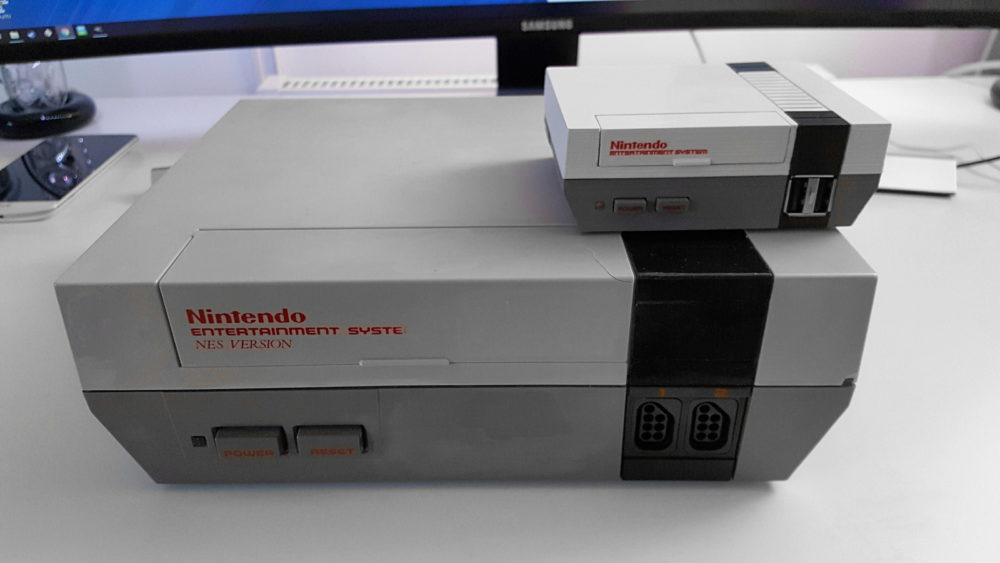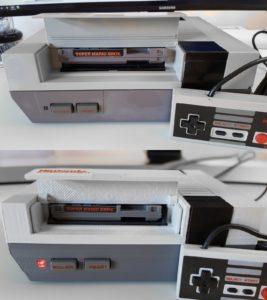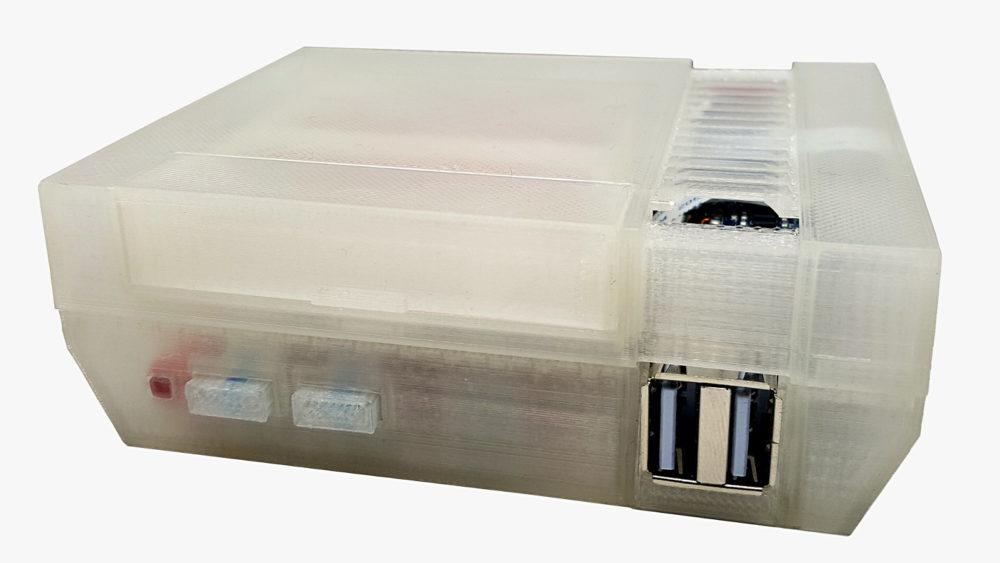While it wasn’t the first home video game system, the Nintendo Entertainment System (NES) is unarguably the most iconic and important in the history of the video game industry. When the NES was released in North America in 1985 the industry in the US was on the verge of collapse, and very few in the media believed that there was anything that Nintendo could do to turn that around. Even after selling 2.5 million units in Japan, releasing the NES in the US was still a huge risk for Nintendo. And the company’s unorthodox business model of licensing out game development to third party companies and blocking the release of unlicensed games was largely seen as needlessly restrictive.
It turned out that the higher quality games that resulted quickly won over the public, and the NES seemed to be exactly the video game system that the US market was waiting for. Within a matter of years the NES would end up taking its place in history as the best selling video game system of all time. The era of the NES is also largely responsible for many of the most iconic video games ever made, many of them continuing to be played and enjoyed to this day and living life again through emulators and official sequels that update the originals. But beyond the games, it was the NES itself that began an entire generation’s love affair with video games. It was designed to be fun, easy to use and, above all else, to be especially usable by children.
One of that generation of kids raised by the NES, a game system made primarily for them in mind, is UK-based blogger and maker Daftmike. He decided to turn his love of the iconic game system into a new project for him to experiment with Raspberry Pi and 3D printing. He created his own pint-sized version of the Nintendo Entertainment System, and even created tiny game cartridges and a pair of mini controllers to go along with it. While there are several miniature versions of the NES built using a Raspberry Pi and emulators available, Daftmike’s is exceptionally accurate and has some clever features that elevate it beyond any others.
“The NES was the first console I had growing up. I’ve got strong memories of playing Nintendo games with my brothers when we were younger. The ergonomics of the whole experience are something I still remember very clearly 20+ years later… The front-loading game slot… lifting the door and inserting the cartridge. Pushing it down with that satisfyingly-sprung *click*. The tactility and sound of the power button when you turned it on…and of course blowing on the cartridges when they didn’t work. Fond memories, and all of that is just as much part of my nostalgia for the system as playing the games themselves, and I had some ideas of how I could pay homage to it using the Raspberry Pi,” Daftmike says on his blog.
The mini NES that Daftmike, the NESPi, made is about 40% of the size of the original, and he painstakingly measured it to make sure that none of the design features would be inaccurate at the smaller size. He designed the case in 123D Design and then 3D printed the parts out in order to test the fit and placement of the electronics and the Raspberry Pi. When he 3D printed the final parts he even used filaments from the Faberdashery that matched the original colors almost exactly. The only details that are not authentic are those that would need to match modern technology like ethernet jacks, USB ports and mini SD card slots — all essential modern technology and all essential to making Daftmike’s love letter to the original NES work.
The Raspberry Pi that powers the mini NESPi game system uses a software package called RetroPie that brings several different gaming emulators together. The games are loaded onto the Raspberry Pi via a mini SD card that slots in the bottom of the game system case. In order to make everything feel as authentic as possible Daftmike came up with a clever way of loading games. Rather than simply turning the system on as with every other homemade NES and searching for the game you want to play, he created mini game cartridges each with an NFC tag embedded into it. When the mini cartridge is inserted into the game system and clicked down, just like the original game cartridges, the NFC tag tells the Raspberry Pi which game to load into the emulator. He was even able to simulate the satisfying click of the cartridge being inserted using an inexpensive part used in trashcan lids.
“Comically, I didn’t have a screwdriver of the right size that was long enough to reach all the screws. So I couldn’t take my own NES apart to see how the cart slot worked. From tear-down photos though, I could see the original cartridge latch mechanism would be too difficult to 3D print on a small scale and have work reliably. After some idle searching of eBay, I uncovered an odd yet perfect solution. Bin lids. Apparently the latches on them wear out, and there are people selling cheap replacements on eBay. It turns out they’re just about the right size to use as a latch for my cartridge slot,” Daftmike explains.
Once the design was set the case itself took about 6 and a half hours to 3D print. Daftmike used Storm Grey Faberdashery filament for the bottom half of the case and Architect’s Stone filament for the top. The details, trim and cartridge tray are all printed using Classic Black filament. The only pieces that needed to be glued together were the black details, everything else was created to simply snap together so the case could be opened easily without breaking it. The cartridges were 3D printed in the same Storm Grey filament used for the case in two pieces and then glued together with the NFC tag inside of it. Daftmike created them at the same 40% scale as the rest of the case, and he finished them off with copies of the game labels that were laminated using packing tape.
Daftmike talks about his NES project on his YouTube page:
While Nintendo may be releasing their own mini NES game system in November, the official version doesn’t have anything on Daftmike’s. For obvious reasons he can’t sell anyone his mini NESPi console, but he said that he’s considering creating and selling electronic hardware kits so anyone can build their own, and he plans to release the STL files as soon as he’s worked out all of the bugs. He has already uploaded the STL files for the mini NES cartridges to Thingiverse. In addition to the above video Daftmike has produced two more videos detailing the project in more depth, and written a full build and design log on his website. He is also producing a series of videos detailing each step of the build process to his YouTube channel. Discuss this new project further over in the 3D Printed Mini NES forum over at 3DPB.com.
Subscribe to Our Email Newsletter
Stay up-to-date on all the latest news from the 3D printing industry and receive information and offers from third party vendors.
You May Also Like
Gorilla Sports GE’s First 3D Printed Titanium Cast
How do you help a gorilla with a broken arm? Sounds like the start of a bad joke a zookeeper might tell, but it’s an actual dilemma recently faced by...
Nylon 3D Printed Parts Made More Functional with Coatings & Colors
Parts 3D printed from polyamide (PA, Nylon) 12 using powder bed fusion (PBF) are a mainstay in the additive manufacturing (AM) industry. While post-finishing processes have improved the porosity of...
$25M to Back Sintavia’s Largest Expansion of Metal 3D Printing Capacity Since 2019
Sintavia, the digital manufacturing company specializing in mission-critical parts for strategic sectors, announced a $25 million investment to increase its production capacity, the largest expansion to its operations since 2019....
Velo3D Initiates Public Offering in a Bid to Strengthen Financial Foundations and Drive Future Growth
Velo3D (NYSE: VLD) has been among a number of publicly traded 3D printing firms that have attempted to weather the current macroeconomic climate. After posting a challenging financial report for 2023,...




































